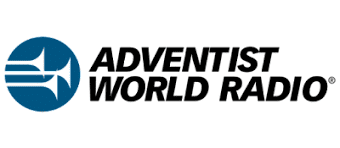Radio broadcasting from ships goes back a long way, almost to the beginning of wireless experimentation itself. The early experimenters in Europe, including Marconi himself, demonstrated the value of wireless communication by installing primitive experimental apparatus in small boats and transmitting messages across the intervening ocean. This form of wireless communication was also demonstrated in the early years between Catalina Island and the California coast in the United States, and between Rottnest Island and the state capital Perth in Western Australia.
However, as far as broadcasting is concerned, maybe we could designate the first occasion as the coverage of a sporting event, the Kingstown Regatta in Dublin Harbour, Ireland. Marconi installed a wireless transmitter on a tug boat, the Flying Huntress, and he transmitted the progress of the boat race in Morse Code for the benefit of the Dublin based “Daily Express” which printed the results in a special edition. This was a two day sporting event held on July 20 and 22 way back in the year 1898.
The first voice broadcast from a ship was conducted by the Kentucky inventor, Nathan Stubblefield, on March 20, 1902. He was giving a public demonstration of his wireless system and he sent voice messages from the ship Hartholdi on the Potomac River in Washington, DC. Among those who heard the messages on shore were several congressman and other public officials.
The first wireless program with music and speech was broadcast from a royal navy ship, the Andromeda, in the year 1907. This broadcast was organized by Lieutenant Quentin Crauford and at the time the “Andromeda” was anchored at Chatham, an inlet off the Thames Estuary on the east coast of England.
In recounting the event, Wireless Operator Crauford stated that he adapted the spark wireless transmitter with the callsign QFP on the “Andromeda” so that it could broadcast music and speech. His historic inaugural broadcast was a patriotic concert program performed by navy personnel.
This surprise broadcast was heard by wireless operators on board other navy vessels anchored nearby. However, as a security measure, Lt Crauford was not permitted to publicize the event, neither before nor afterwards, though the event attained historic significance as the first wireless broadcast in England and the first from a ship.
Some nine years later, a ship broadcast was made from Ireland which they now claim as the world first. The event took place during the now famous Easter Uprising at a time when Ireland was striving for independence.
The cable linking Ireland and England had been deliberately cut and in an endeavor to get the information out, a broadcast was made from a ship wireless transmitter. Republican leaders occupied the Irish School of Wireless Telegraphy, repaired a damaged ship radio, and transmitted the information in Morse Code.
This unusual broadcast was on the air for a period of nearly 20 hours, beginning at 5:30 pm on April 25, 1916. However, it is not certain as to whether the wireless transmitter was still in the ship or whether it was temporarily located ashore in the school property.
And finally in ship broadcasting for today, we move to Russia. During the communist revolution in Russia in 1917, Vladimir Lenin announced the success of the Bolshevik Revolution in a wireless broadcast from a navy cruiser anchored at St. Petersburg. He had the wireless operator on board the Aurora, send out the information in a series of Morse Code broadcasts.
These days, a picture of the “Aurora” is featured on postcards used as QSL cards by Russian amateur radio operators.
From: Wavescan 333, May 13th, 2001
 “Wavescan” is a weekly program for long distance radio hobbyists produced by Dr. Adrian M. Peterson, Coordinator of International Relations for Adventist World Radio. AWR carries the program over many of its stations (including shortwave).
“Wavescan” is a weekly program for long distance radio hobbyists produced by Dr. Adrian M. Peterson, Coordinator of International Relations for Adventist World Radio. AWR carries the program over many of its stations (including shortwave). 